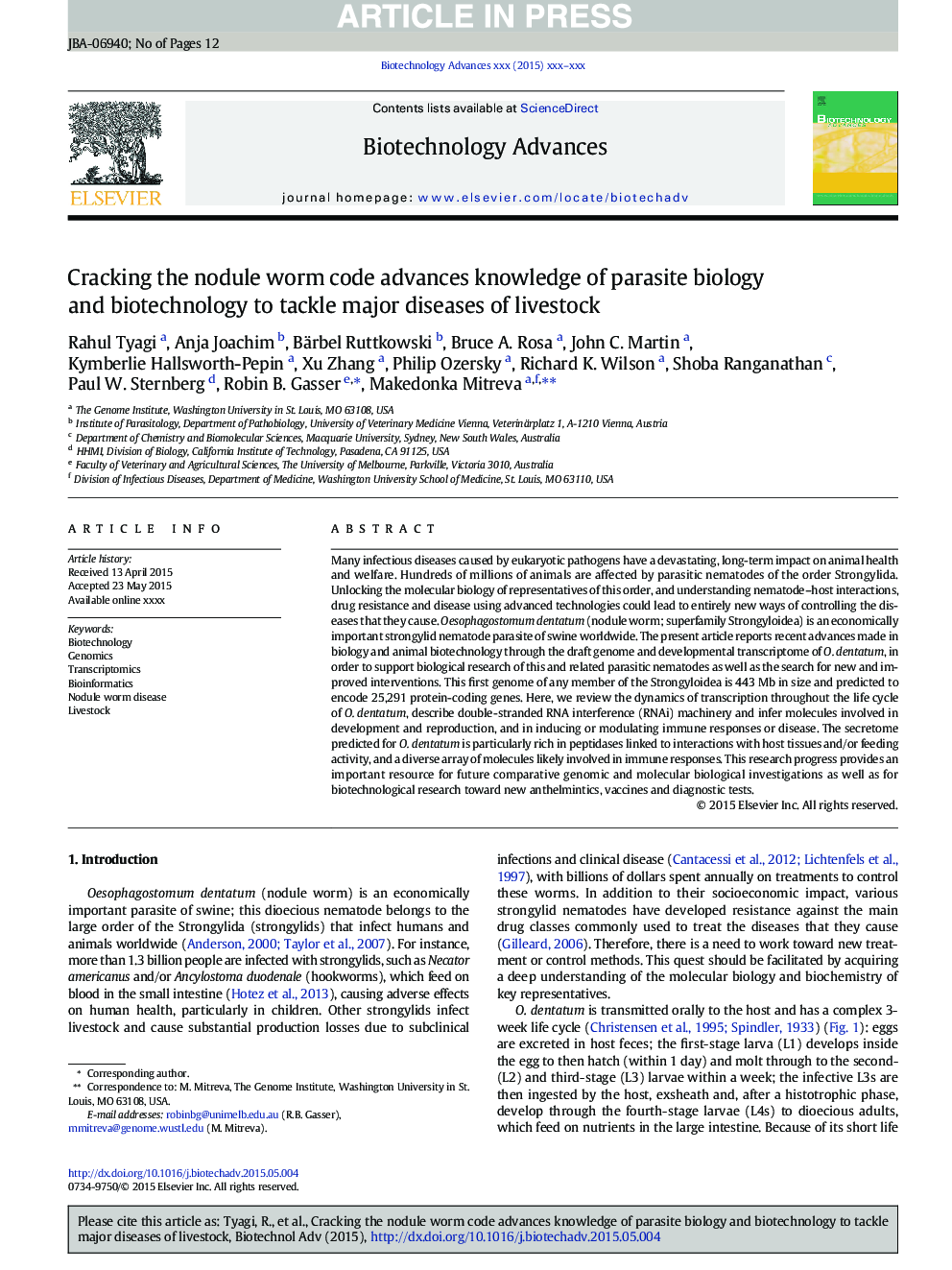| Article ID | Journal | Published Year | Pages | File Type |
|---|---|---|---|---|
| 10231476 | Biotechnology Advances | 2015 | 12 Pages |
Abstract
Many infectious diseases caused by eukaryotic pathogens have a devastating, long-term impact on animal health and welfare. Hundreds of millions of animals are affected by parasitic nematodes of the order Strongylida. Unlocking the molecular biology of representatives of this order, and understanding nematode-host interactions, drug resistance and disease using advanced technologies could lead to entirely new ways of controlling the diseases that they cause. Oesophagostomum dentatum (nodule worm; superfamily Strongyloidea) is an economically important strongylid nematode parasite of swine worldwide. The present article reports recent advances made in biology and animal biotechnology through the draft genome and developmental transcriptome of O. dentatum, in order to support biological research of this and related parasitic nematodes as well as the search for new and improved interventions. This first genome of any member of the Strongyloidea is 443Â Mb in size and predicted to encode 25,291 protein-coding genes. Here, we review the dynamics of transcription throughout the life cycle of O. dentatum, describe double-stranded RNA interference (RNAi) machinery and infer molecules involved in development and reproduction, and in inducing or modulating immune responses or disease. The secretome predicted for O. dentatum is particularly rich in peptidases linked to interactions with host tissues and/or feeding activity, and a diverse array of molecules likely involved in immune responses. This research progress provides an important resource for future comparative genomic and molecular biological investigations as well as for biotechnological research toward new anthelmintics, vaccines and diagnostic tests.
Related Topics
Physical Sciences and Engineering
Chemical Engineering
Bioengineering
Authors
Rahul Tyagi, Anja Joachim, Bärbel Ruttkowski, Bruce A. Rosa, John C. Martin, Kymberlie Hallsworth-Pepin, Xu Zhang, Philip Ozersky, Richard K. Wilson, Shoba Ranganathan, Paul W. Sternberg, Robin B. Gasser, Makedonka Mitreva,
